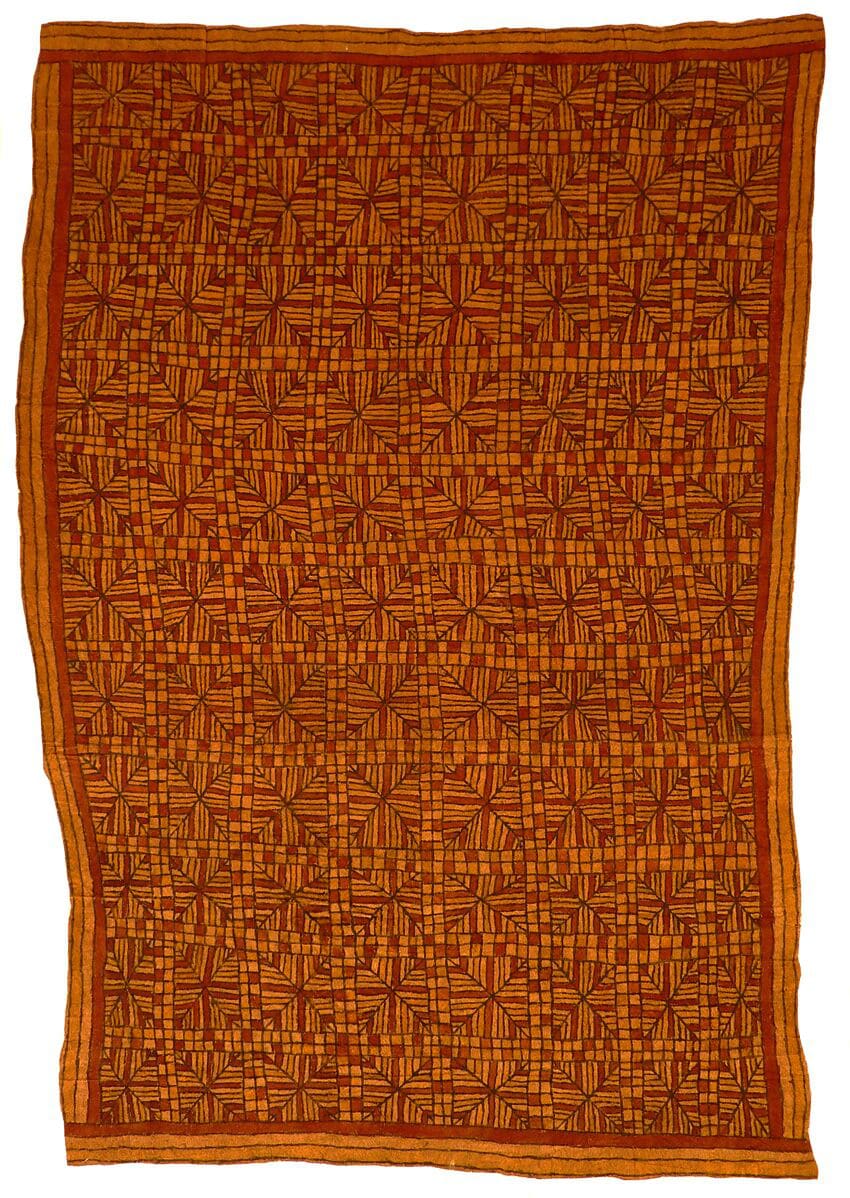Mionomehi Oriseegé (Ancestral Paths): Barkcloth from Omie
Past exhibition
Jessy-Rose Evovo (Cubaitori) Papua New Guinean, Omie, b. 1970
Rorono hano'e
natural pigments on nioge (barkcloth)
96.5 x 66 cm
832018
Gusiraje clan design of the roron'e plant. Jessy-Rose has painted a very old design that she inherited from her grandmother, (her fathers mother) Go'ovino. Go'ovino belonged to the Gusiraje clan...
Gusiraje clan design of the roron'e plant.
Jessy-Rose has painted a very old design that she inherited from her grandmother, (her fathers mother) Go'ovino. Go'ovino belonged to the Gusiraje clan and lived in the old village of Enope before it was destroyed by the volcanic eruption of Huvaimo (Mt Lamington) in 1951. The design is called rorono'e hano'e representing the Gusiraje clan design of the rorono'e plant plant that grows on dry land. When a man kills a cassowary he breaks the leaf of the rorono'e and places it in his hair. When the man returns to the village all of the village people and Chiefs know that the man has had a successful cassowary hunt. Brenda Kesi, Go'ovino's daughter, says Go'ovino belonged to the Emate clan. Gusiraje is likely a sub-clan of the Emate clan
Jessy-Rose has painted a very old design that she inherited from her grandmother, (her fathers mother) Go'ovino. Go'ovino belonged to the Gusiraje clan and lived in the old village of Enope before it was destroyed by the volcanic eruption of Huvaimo (Mt Lamington) in 1951. The design is called rorono'e hano'e representing the Gusiraje clan design of the rorono'e plant plant that grows on dry land. When a man kills a cassowary he breaks the leaf of the rorono'e and places it in his hair. When the man returns to the village all of the village people and Chiefs know that the man has had a successful cassowary hunt. Brenda Kesi, Go'ovino's daughter, says Go'ovino belonged to the Emate clan. Gusiraje is likely a sub-clan of the Emate clan
24
of
24
